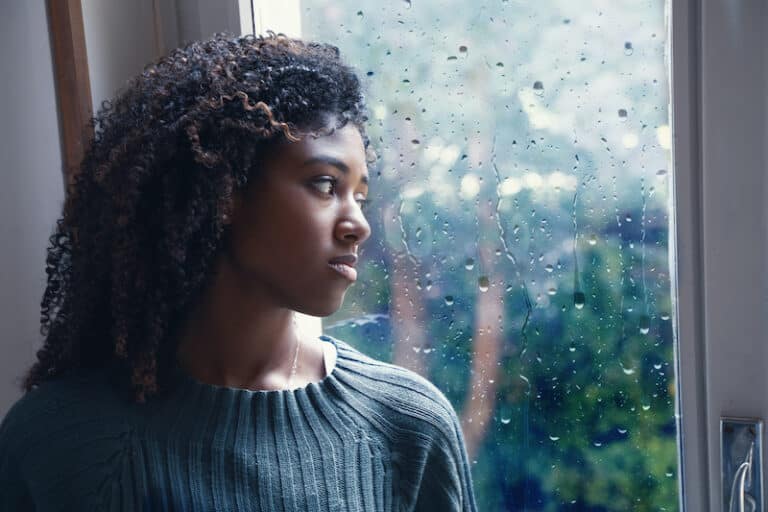By Dr. Daniel Graetzer | 11/03/2022

During the long winter months, do you feel sluggish or have a low energy level? Has your appetite decreased or do you require more sleep than normal, but you do not understand why? One major cause of winter depression is called seasonal affective disorder (SAD).
SAD sufferers endure a predictable pattern each year. As daylight hours dwindle during the fall, they begin to feel lethargic. Their symptoms become more severe in the short winter days of January and February and then lift as the spring equinox approaches.
Seasonal Affective Disorder Increases Depending Upon Your Geographic Location
The prevalence of seasonal affective disorder increases as you head north of the equator. For instance, about 1-2% of people who live in areas like Florida suffer from SAD, as compared to 5% in areas like Maryland and 10% in areas like New Hampshire.
These twin trends of season and latitude strongly suggest a link between seasonal affective disorder and short periods of daylight. Spending less and less time in the daylight seems to play havoc with the body’s biological clock, upsetting the circadian rhythms that control sleepiness, hunger, and other physiological and psychological functions.
Perhaps this is one reason why retired people follow the sun and move south during the summer. According to Saranga Comprehensive Psychiatry, most seasonal affective disorder patients are women while a milder version of SAD has been reported in children and adolescents.
In a similar vein, airplane travel, especially eastbound travel over three or more time zones, can also have a negative contribution to normal circadian function.
Seasonal Affective Disorder and Body Hormones
Most seasonal affective disorder research has focused on the hormone melatonin, which reaches its highest blood levels between dusk and dawn. Seasonal affective disorder may result from the body’s overproduction of melatonin during the winter months.
Low levels of serotonin and norepinephrine, important chemicals in the brain that when suppressed are known to cause depression as well as a craving for carbohydrates, are also present in people with seasonal affective disorder. The eyes of these patients may be less sensitive to light and never fully adjust to dim winter days as normal eyes do, thus disrupting the body’s internal clock by making days seem shorter than usual.
Daily Exposure to Bright Light Is Useful for Treating Seasonal Affective Disorder
Fortunately, there is a cure for seasonal affective disorder. Daily exposure to bright light has been shown to relieve lethargy in many patients suffering from seasonal affective disorder.
Apparently, light therapy elevates serotonin levels in the blood and also reduces the body’s production of melatonin. Light landing on a patient’s retinas sends a neural signal to the hypothalamus to suppress melatonin production by the pineal gland.
And the good news is that light therapy works fast. Symptoms typically begin to subside in just a few days, and complete recovery is often seen within about a week.
To remain effective, however, light therapy must continue until springtime. Otherwise, the symptoms of seasonal affective disorder will reoccur in about 10 days.
In most studies, patients have been exposed to relatively dim lights that produce about 2,500 lux (about five times the brightness of a well-lit office or about the same as the springtime sky just after sunrise). Two hours of light per day appears to be the minimum for success with 2,500 lux lights. A few recent studies have used powerful 10,000-lux units, which produce good results after only about 30 minutes of exposure.
The best effects are seen when light therapy is used in the early morning. Ideally, a patient should not stare directly at the bright light. Instead, those lights should be placed in a position above the head to simulate solar light.
Commercial light boxes are now available and relatively inexpensive. Light boxes can be rented on a trial basis in case you are in that 20% of the population for which light therapy does not work.
Outdoor Exercise Is a Good Way to Treat Seasonal Affective Disorder
I personally recommend that you get 45-60 minutes of outdoor exercise every day to treat seasonal affective disorder. If you are not in shape, start by talking a walk. Try to get outdoors every day for at least one hour a day if you can.
Exercise is known to boost mood and energy levels. But if you cannot spare the time to be outside, reading or writing next to a window will help you soak up some rays and reduce the symptoms of seasonal affective disorder.
Dietary changes can also help relieve seasonal affective disorder. Carbohydrates generally send you to sleep, so eat protein-rich foods in the morning and save the carbs for evening meals (which is actually the reversal of eating patterns of many persons).
It’s very common to feel somewhat down over the winter. But if you suffer from SAD severe enough to disrupt your daily life, it’s worth doing something about it.